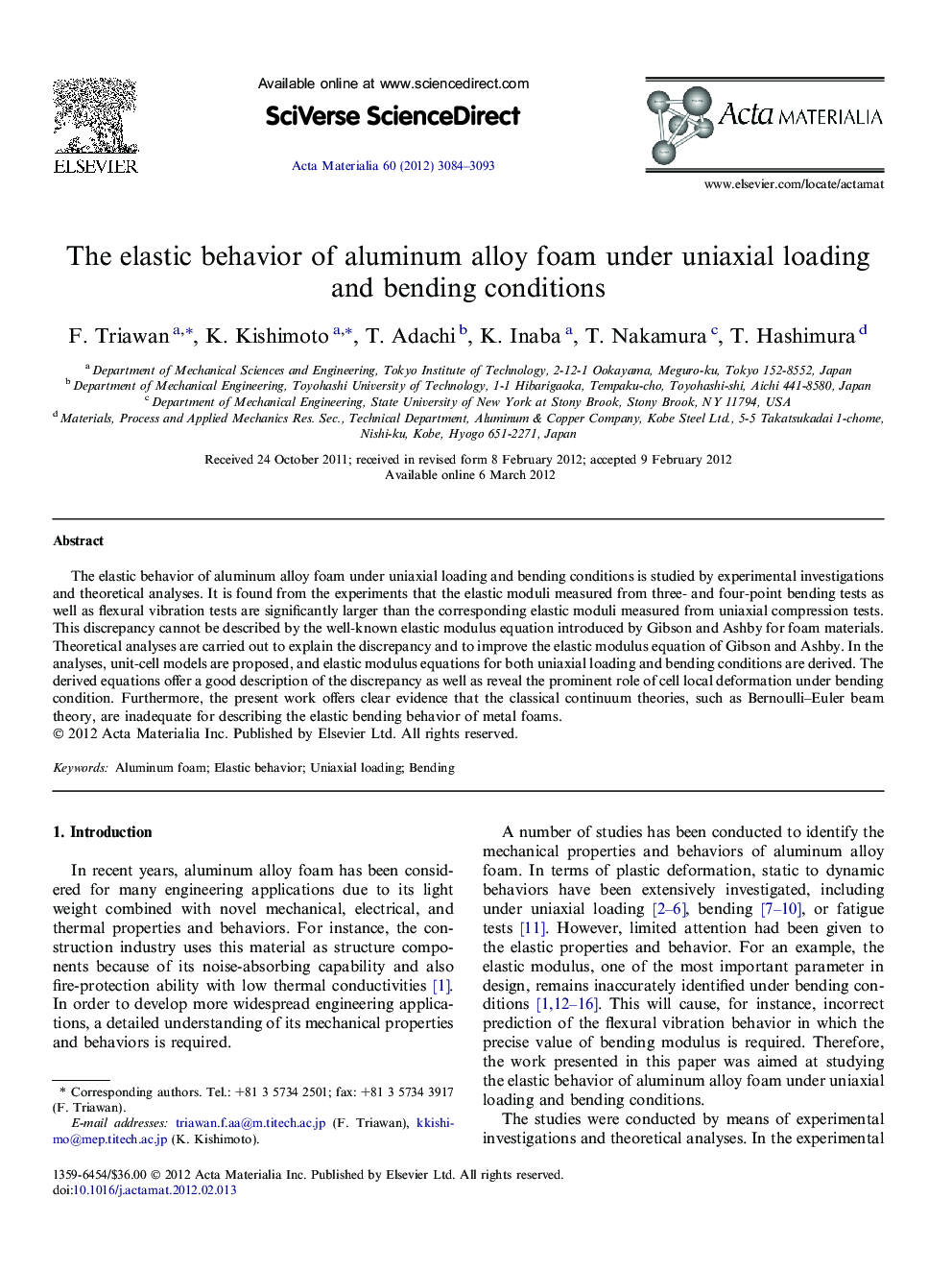| Article ID | Journal | Published Year | Pages | File Type |
|---|---|---|---|---|
| 7883225 | Acta Materialia | 2012 | 10 Pages |
Abstract
The elastic behavior of aluminum alloy foam under uniaxial loading and bending conditions is studied by experimental investigations and theoretical analyses. It is found from the experiments that the elastic moduli measured from three- and four-point bending tests as well as flexural vibration tests are significantly larger than the corresponding elastic moduli measured from uniaxial compression tests. This discrepancy cannot be described by the well-known elastic modulus equation introduced by Gibson and Ashby for foam materials. Theoretical analyses are carried out to explain the discrepancy and to improve the elastic modulus equation of Gibson and Ashby. In the analyses, unit-cell models are proposed, and elastic modulus equations for both uniaxial loading and bending conditions are derived. The derived equations offer a good description of the discrepancy as well as reveal the prominent role of cell local deformation under bending condition. Furthermore, the present work offers clear evidence that the classical continuum theories, such as Bernoulli-Euler beam theory, are inadequate for describing the elastic bending behavior of metal foams.
Related Topics
Physical Sciences and Engineering
Materials Science
Ceramics and Composites
Authors
F. Triawan, K. Kishimoto, T. Adachi, K. Inaba, T. Nakamura, T. Hashimura,
